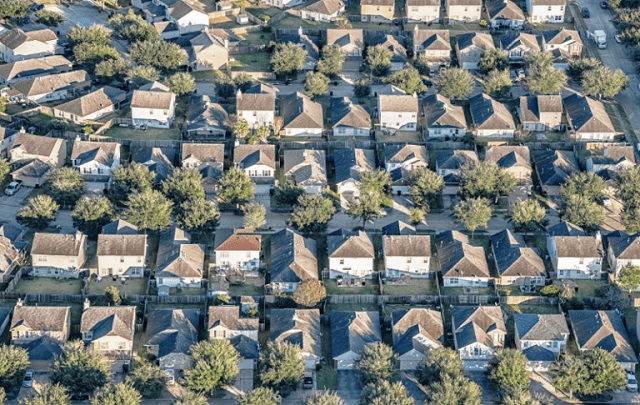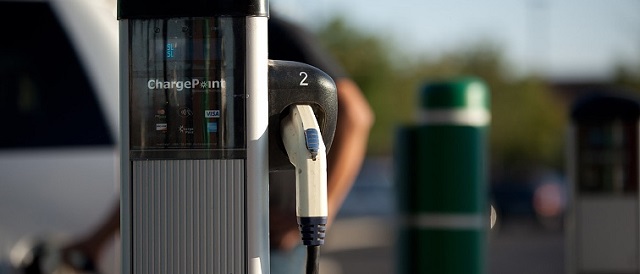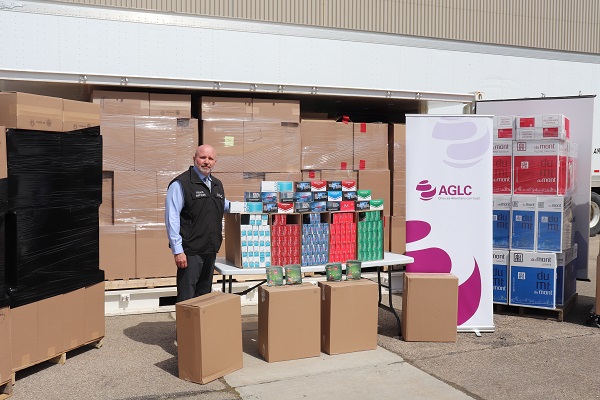Economy
Canada can’t have fast population growth, housing supply constraints, and housing affordability

From the MacDonald Laurier Institute
By Steve Lafleur
No one wants to solve the housing crisis enough to make the hard choices.
It’s tempting to try to have it all and policymakers are not immune to this. There are tradeoffs in everything. Ignoring those tradeoffs might work for awhile, but eventually reality catches up to you. Try as we might, we can’t have it all.
For instance, we can’t have rapid population growth, housing supply constraints, and housing affordability all at the same time. We’ll call this the housing affordability trilemma.
The idea of a policy trilemma comes from the Mundell-Fleming model which is included in most introductory economics textbooks. The model was named after Canadian economist Robert Mundell and British economist Marcus Fleming, who developed the idea in the early 1960s. The basic premise of the model, also called the “impossible trinity” or “trilemma” is that you can have two of three policies, but not all three (namely, free capital flow, a fixed exchange rate, and a sovereign monetary policy).
The idea of an impossible trinity can and has been applied to other situations, like the euro crisis in the early 2010s, and provides a useful way of looking at seemingly intractable problems. Plotting the related problems on a Venn Diagram helps visualize the problem. Here is the Mundell-Flemming model, visualized.

(Source: Author’s creation, graphic recreated)
Now, let’s return to housing policy. Few Canadian problems are as intractable as the now nationwide housing affordability crisis. Rents are rising quickly, apartment availability is falling, and home prices are the highest relative to incomes in the G7. As we’ve shown in a recent paper for the MacDonald Laurier Institute, Canada’s population growth is outstripping housing growth. This, unsurprisingly, has undermined housing affordability. Let’s visualize this trilemma.

(Source: Author’s creation, graphic recreated)
At the root of Canada’s housing woes is a severe shortage of homes relative to the number needed. We simply don’t build enough homes to adequately house current and future Canadians.
Not only is there cross-party consensus that there’s a housing shortage, but most parties in provincial and federal elections have proposed policies aimed at addressing it. So why do we still have a shortage?
Let’s go through the elements of the Canada’s housing trilemma (or housing impossibility trinity).
The first element is a fast-growing population. Canada has the fastest growing population in the G7, and last year alone grew by more than a million people. Barring any major shifts in immigration policy, this trend is unlikely to change any time soon. Indeed, the population grew by 430,635 in the third quarter of 2023. That’s the highest quarterly growth rate since 1957.
The second element is restrictions on homebuilding. Whether intended or not, a suite of policies processes and regulations that prevent or limit the addition of more homes both in existing neighbourhoods and at the urban fringe. Barriers to density include local zoning bylaws, lengthy and uncertain consultation processes, and growth plans that exclude building or upgrading the infrastructure necessary to enable more homebuilding in existing neighbourhoods. Policies explicitly preventing the addition of homes outside of existing neighbourhoods include Ontario’s Greenbelt and British Columbia’s Agricultural Land Reserve, while softer versions include local planning targets limiting the share of development slotted to occur on city outskirts. Given these limitations, it’s no surprise that we’ve rarely surpassed 200,000 housing completions annually since the 1970s, while the rate of population growth has reached generational highs.
The third element is housing affordability. That is, the ability for individuals and families earning local incomes to comfortably meet their housing needs. This means shelter costs don’t prevent them from feeding and clothing themselves, but also allow saving and investing in an education, for instance. For example, some peg the cut-off for affordability at 30 percent of income. By that measure, a household would require an income of over $100,000 to afford a one-bedroom apartment in Vancouver, for example.
Whether we like it or not, we can’t have fast population growth, rigid housing supply constraints, and housing affordability all at the same time.
For most of our recent past, the choice we’ve collectively made is to accelerate population growth while maintaining many (if not most) restrictions on both outward and upward growth, meaning we’ve excluded the possibility of achieving broad affordability. The consequences? All the symptoms mentioned before: rising rents, falling vacancies, higher ownership costs.
Despite recent pivots by a growing number of local and provincial governments, the balance of housing and land-use policies remains firmly tilted against reaching the level of homebuilding we need to restore some semblance of affordability, which by some estimates means more than doubling homebuilding. To wit, housing construction has remained remarkably stagnant—even slightly declining—in recent decades. Even the bold changes to zoning recently passed in British Columbia, Ontario and Nova Scotia are unlikely to double the number of housing built provincewide.
But, as the housing trilemma suggests, there are alternative routes. If Canadians remain adamant about affordability, we can demand more meaningful reduction or removal of policies preventing a growth in housing supply, or we can demand a reduction in population growth, or both. These are not easy choices but ignoring them doesn’t make them go away. We need to build upwards, outwards, or both, in order to meaningfully increase housing production. We can’t say no to every solution and expect better results.
The point is, there’s broad consensus that Canada faces a housing crisis, and that major policy actions are needed to fix the problem. There’s also a tacit consensus that the policies feeding the crisis should remain in place.
To put it more bluntly, everyone wants to solve the housing crisis, but no one wants to solve the housing crisis enough to make the hard choices. Until we collectively shift our priorities, we are choosing to sacrifice housing affordability. We can’t have it all. If we insist on maintaining fast population growth and restrictions on supply, we’ll get the broken housing market we deserve.
Steve Lafleur is a public policy analyst who researches and writes for Canadian think tanks.
Economy
Feds spend $3 million to fly 182 politicians and bureaucrats to climate conference

From the Canadian Taxpayers Federation
Author: Ryan Thorpe
Feds trip to COP28 in Dubai cost $3 million
The cost for Canada to send hundreds of people to COP28 in Dubai has doubled, rising to nearly $3 million, according to government records obtained by the Canadian Taxpayers Federation.
Included in those costs is $1.3 million the federal government dished out to host a “Canada Pavilion” at the summit, which featured a rapper performing a song on “climate disinformation,” while giving a shoutout to Environment Minister Steven Guilbeault.
“Nothing screams fighting climate change like flying around the world burning through jet fuel and millions of tax dollars,” said Franco Terrazzano, CTF Federal Director. “Here’s a crazy idea: maybe the feds don’t need to spend $3 million flying 182 politicians and bureaucrats to Dubai.”
The federal government paid for at least 182 people to go to COP28, held from Nov. 30 to Dec. 12, 2023, in Dubai, United Arab Emirates.
A previous report from the National Post pegged the cost for Canada’s delegation at $1.4 million.
But the bill now sits at $2,954,188, including $825,466 for transportation, $472,570 for accommodations and $295,455 for meals and incidentals, according to the records.
The records indicate the cost could rise even higher, as certain invoices and travel claims “have yet to be processed.”
Costs included $1.3 million for a “Canada Pavilion” to “showcase the breadth of Canadian climate leadership.”
At the Canada Pavilion, a Canadian rapper known as Baba Brinkman – the son of Liberal MP Joyce Murray – performed a rap on “climate disinformation.”
“Climate disinformation, get that immunization, the vaccine for bad meme infiltration,” Brinkman rapped. “Climate misinformation, it leads to polarization, which leads to radical conspiracy ideation.”
Environment Minister Steven Guilbeault also received a shoutout during Brinkman’s rap.
“Really? Hosting a rapper half-way around the world to drop rhymes at a government podium will help the environment?” Terrazzano said.
The records were released in response to an order paper question from Conservative MP Dan Mazier (Dauphin-Swan River-Neepawa).
Most of the hotel expenses came from the Dubai Marriott and the Premier Inn at the Dubai Investment Park, with rooms coming in between $150 and $400 per night.
The most expensive digs was a $816-per-night suite at the Pullman Dubai Jumeriah Lakes Towers, a “five-star hotel offering upscale accommodations.”
The Canadian delegation also handed out $650 worth of gifts during the trip.
Automotive
Biden’s Climate Agenda Is Running Headfirst Into A Wall Of His Own Making

 From the Daily Caller News Foundation
From the Daily Caller News Foundation
By WILL KESSLER
President Joe Biden’s administration unveiled tariffs this week aimed at boosting domestic production of green energy technology, but the move could end up hamstringing his larger climate goals.
The tariffs announced on Tuesday quadruple levies for Chinese electric vehicles (EVs) to 100% and raise rates for certain Chinese green energy and EV components like minerals and batteries. Biden has made the transition to green energy and EVs a key part of his climate agenda, but hiking tariffs on those products to help U.S. manufacturing could jack up prices on the already costly products, slowing adoption by struggling Americans, according to experts who spoke to the DCNF.
The risks posed by hiking levies on green technology expose the inherent tension between Biden’s climate agenda and his efforts to protect American industry, which often struggles to compete with cheap foreign labor. Items on his climate agenda typically raise costs, and requiring companies to comply could make them uncompetitive on the world stage.
“These tariffs are a classic example of the Biden administration’s left hand not knowing what the right hand is doing,” E.J. Antoni, a research fellow at the Heritage Foundation’s Grover M. Hermann Center for the Federal Budget, told the DCNF. “The inability to import Chinese-made EVs due to prohibitively high costs will necessitate importing raw materials and parts for EVs from China. Since automakers can’t afford to build and assemble the vehicles here, prices will have to rise. In other words, American consumers will pay the cost of this tariff, not the Chinese.”
The White House, in its fact sheet, pointed to China artificially lowering its prices and dumping goods on the global market as the justification for the new tariffs in an effort to help protect American businesses. China has pumped huge subsidies into its own EV industry and supply lines over the past few years, spawning a European Union investigation into vehicles from the country.
“Tariffs on Chinese EVs won’t just make Chinese EVs more expensive, they will also make American EVs more expensive,” Ryan Young, senior economist at the Competitive Enterprise Institute, told the DCNF. “This is because domestic producers can now raise their prices without fear of being undercut by competitors. Good for them but bad for consumers — and for the Biden administration’s policy goal of increased EV adoption.”
Several American manufacturers are already struggling to sell EVs at a profit, with Ford losing $4.7 billion on its electric line in 2023 while selling over 72,000 of the vehicles. To ease price concerns and increase EV adoption, the Biden administration created an EV tax credit of $7,500 per vehicle, depending on where its parts are made.
The market share of EVs out of all vehicles fell in the first quarter of 2024 from 7.6% to 7.1% as consumers opted to buy cheaper traditional vehicles instead. Growth in EV sales increased by just 2.7% in the quarter, far slower than the 47% growth that the industry saw in all of 2023.
The Biden administration has also sought to use regulations to push automakers toward electrifying their offerings as consumers refuse to voluntarily adopt EVs, finalizing rules in March that effectively require around 67% of all light-duty vehicles sold after 2032 to be electric or hybrids.
“By raising the price — and thereby stunting the deployment — of EVs, the tariffs undermine the Biden administration’s stated goals of reducing carbon emissions (as many U.S. environmentalists and EV fans have recently lamented),” Clark Packard, research fellow in the Herbert A. Stiefel Center for Trade Policy Studies at the Cato Institute, wrote following the announcement. “The EV tariffs (and also-announced solar tariffs) would continue the administration’s habit of choosing politics and protectionism over their environmental agenda.”
Despite the subsidies, the 25% tariff that is currently in place for Chinese EVs already prices the product out of the U.S. market, resulting in no Chinese-branded EVs being sold in the country, according to Barron’s. Only a handful of the more than 100 EV models being sold in China appeal to American consumers, and none of them can compete under current levies.
“Something like this happened just a few years ago when former president Donald Trump enacted 25% steel tariffs in 2018,” Young told the DCNF. “Domestic steel producers raised their prices by almost exactly the amount of the tariff, and America soon had the world’s highest steel prices. As a result, car prices went up by about $200 to $300 on average. Larger trucks with more steel content increased even more. Now Biden is going to do the same thing to EVs.”
I won’t allow American towns and workers to be hurt by China’s unfair trade practices that flood our markets with cheap products.
That’s what these new tariffs are all about. pic.twitter.com/GGApGqtg7O
— President Biden (@POTUS) May 15, 2024
In the year following the increase in steel tariffs under the Trump administration, U.S. Steel’s operating profit rose 38%, prices were hiked 5 to 10% and revenue was up 15% due to reduced competition, according to CNN.
Despite the massive tariff hike on EVs, Biden only raised the tariff rate on Chinese lithium-ion EV batteries and battery parts to 25%, according to the White House. The tariff rate on certain essential minerals, like natural graphite, was also hiked to just 25%.
“Despite rapid and recent progress in U.S. onshoring, China currently controls over 80% of certain segments of the EV battery supply chain, particularly upstream nodes such as critical minerals mining, processing, and refining,” the White House wrote in its fact sheet. “Concentration of critical minerals mining and refining capacity in China leaves our supply chains vulnerable and our national security and clean energy goals at risk.”
China has broad control over the majority of minerals necessary to construct EVs, possessing nearly 90% of the world’s mineral refining capacity. Sources of the required minerals often also have serious human rights concerns, such as the world’s supply of cobalt, which has widespread ties to child labor.
Biden attacked former President Donald Trump during the 2020 election for the broad tariffs that he put on Chinese goods, noting that “any freshman econ student” could point out that the costs of the tariffs would be passed on to American consumers.
EV makers have increasingly struggled over the past year to maintain profits amid stalling demand, with the largest American EV manufacturer, Tesla, reporting a 10% drop in year-over-year revenue in the first quarter of 2024. Tesla is one of several EV makers that have announced layoffs in recent months.
“Fortunately, the EV market is still small in the U.S. and Chinese EVs are an even smaller slice of that small pie,” Antoni told the DCNF. “Even if the EV market in the U.S. were large, these tariffs would not help the domestic EV industry. While consumer demand for EVs would shift to domestic models, an increase in domestic production would rely on very expensive inputs from China, cutting into profits.”
The White House did not respond to a request to comment from the DCNF.
-

 conflict1 day ago
conflict1 day agoWhite House Reportedly Worried About Russia’s Sudden Momentum Months After Biden Declared Putin ‘Already Lost’ War
-

 Health2 days ago
Health2 days agoSouth Korean president declares low birth rate a ‘national emergency,’ plans new ministry to address it
-

 Alberta2 days ago
Alberta2 days agoFortis et Liber: Alberta’s Future in the Canadian Federation
-

 Crime2 days ago
Crime2 days agoSlovakian prime minister who opposed WHO Pandemic Treaty shot in assassination attempt
-

 COVID-1923 hours ago
COVID-1923 hours agoNIH Quietly Altered Definition For Gain-Of-Function Research On Its Website, Former Fauci Aide Confirms
-

 Crime20 hours ago
Crime20 hours agoThe US Canadian border: Greatest number of terrorist watch list individuals being apprehended at northern border
-

 Health2 days ago
Health2 days agoUK pediatrician who led review of child ‘transitions’ says US medical groups ‘misleading the public’
-

 Alberta2 days ago
Alberta2 days ago30 million contraband cigarettes valued at $25 million dollars seized in Alberta






